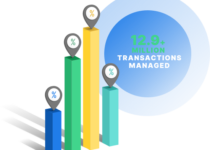How Internal Linking Boost Your SEO?
How Internal Linking Boost Your SEO?
Interlinking is a powerful and often underestimated aspect of SEO usually done by SEO specialist. By enhancing the user experience, improving indexing, distributing link authority, providing context, reducing bounce rates, increasing pageviews, and utilizing keywords effectively, interlinking can significantly boost your website’s search engine visibility and, ultimately, your online success. Incorporating a well-planned interlinking strategy into your overall SEO efforts is a crucial step towards reaching your digital marketing goals. So, embrace the power of interlinking and watch your website’s SEO soar to new heights.
In the ever-evolving world of digital marketing, Search Engine Optimization (SEO) remains a pivotal strategy for businesses and website owners. It’s the art and science of making your website more visible to search engines like Google, which, in turn, boosts your online presence and, ultimately, your business. While there are numerous aspects to SEO, one crucial but often overlooked component is interlinking. In this blog, we will delve into the importance of interlinking for SEO, uncovering the hidden potential it holds in driving organic traffic and improving your website’s overall performance.
The Basics of Interlinking
Interlinking is the practice of connecting one page on your website to another through hyperlinks. These hyperlinks are the clickable elements that guide users from one page to another, offering additional information or related content. For SEO, there are two primary types of interlinking: internal and external.
- Internal Interlinking: This involves linking one page of your website to another page within the same domain. For example, if you have a blog post about “10 Ways to Boost Your Website Traffic,” you can internally link to another article on “The Importance of Keywords in SEO” within your website.
- External Interlinking: This refers to linking your content to pages on other websites. This can provide credibility to your content and can potentially improve your website’s SEO, although it’s not as significant as internal interlinking.
The SEO Benefits of Interlinking
Now, let’s dive into why interlinking is so essential for SEO:
1. Enhanced User Experience
A well-structured interlinking strategy enhances the user experience. When visitors land on your website and find relevant internal links, they are more likely to stay longer and engage with more of your content. This not only reduces your bounce rate but also increases the chances of conversions, whether it’s signing up for a newsletter, making a purchase, or any other desired action. So make sure that visitors won’t land on 404 pages.
2. Improved Indexing
Search engines send out “crawlers” or “spiders” to scan and index the content on your website. Effective interlinking can help these crawlers discover and index more pages on your site. When a page is well-connected to other pages, it sends a signal to search engines that it is valuable and worth indexing. This leads to a higher chance of your content appearing in search results.
3. Distributing Link Authority
In the SEO world, there’s a concept called “link juice” or “link authority.” When one page links to another, it passes a certain amount of authority to the linked page. This is particularly crucial for internal interlinking. When you link from a high-authority page to a lower one, you’re essentially spreading the SEO love, giving the linked page a boost. Over time, this can lead to an overall increase in your website’s authority, which is a significant ranking factor.
4. Contextual Relevance
Interlinking allows you to provide context and relevance to your content. It helps users understand the relationship between different pages and how they connect. This is not only helpful for human visitors but also for search engines that aim to deliver the most relevant results. When you link related content, you are effectively signaling to search engines that your website is an authoritative source on the topic.
5. Lower Bounce Rate
Bounce rate measures the percentage of visitors who navigate away from your site after viewing only one page. High bounce rates can negatively impact your SEO. Interlinking encourages visitors to explore more of your website, thereby reducing bounce rates. When users find more of what they’re looking for within your site, it’s a win-win for both your audience and SEO efforts.
6. Increased Pageviews
Interlinking naturally leads to more page views. As visitors follow internal links to explore related content, you gain more opportunities to showcase your products, services, or ideas. This can translate to increased exposure and conversions, ultimately benefiting your bottom line.
7. Keywords and Anchor Text
Anchor text is the clickable text within a hyperlink. It plays a crucial role in SEO. When you use relevant keywords as anchor text for your internal links, you signal to search engines what the linked page is about. This, in turn, can boost the page’s ranking for those keywords. However, it’s essential to maintain a natural balance, avoiding overuse or “keyword stuffing,” which can lead to penalties from search engines.
Best Practices for Effective Interlinking
While interlinking is a powerful SEO tool, it’s essential to use it strategically. Here are some best practices to keep in mind:
1. Choose Relevant Anchor Text
Use anchor text that is descriptive and relevant to the content you are linking to. This helps both users and search engines understand the context of the link.
2. Prioritize User Experience
Interlinking should primarily benefit your audience. Ensure that the links you include are genuinely helpful and add value to the user’s experience. Overly aggressive interlinking solely for SEO purposes can backfire.
3. Create a Logical Structure
Plan your interlinking strategy. Your website should have a logical structure where related content naturally connects. This enhances user navigation and search engine indexing.
4. Audit and Update
Periodically review your website’s interlinking strategy. As your content evolves, you might find new opportunities to link to older posts or vice versa. Keep your links up to date to reflect the current state of your website by conducting a comprehensive site audit of your site.
5. Balance Internal and External Links
While internal interlinking is essential, don’t neglect external links entirely. Linking to authoritative external sources can enhance your content’s credibility and relevance.
6. Monitor Analytics
Use tools like Google Analytics to monitor the performance of your internal links. This will help you understand which links are working and which may need adjustment.


